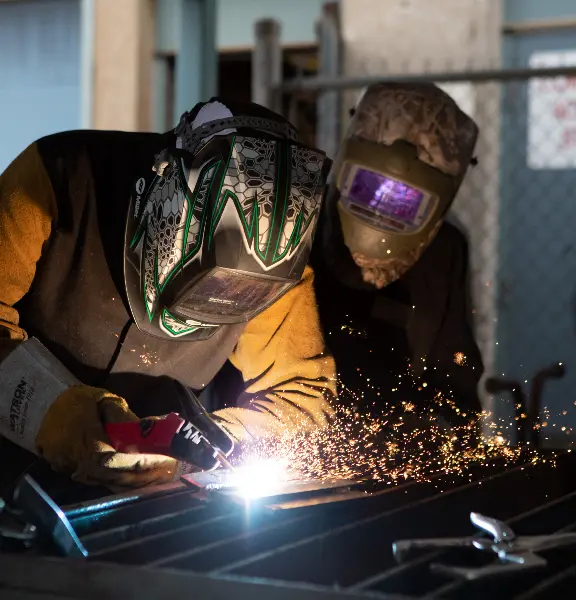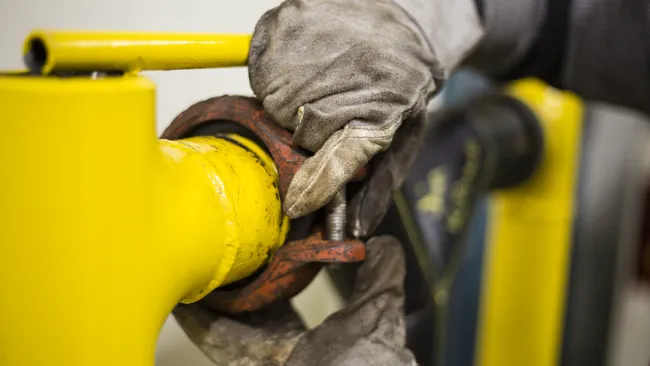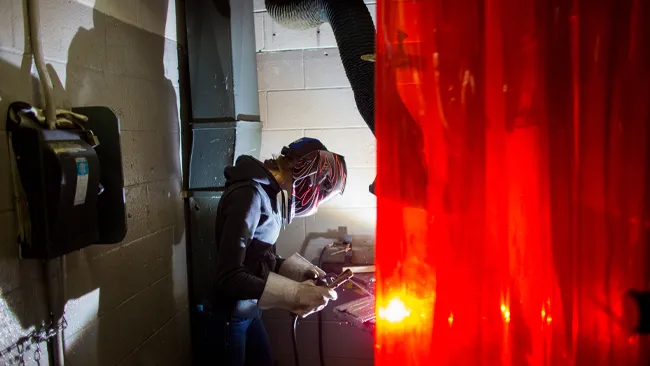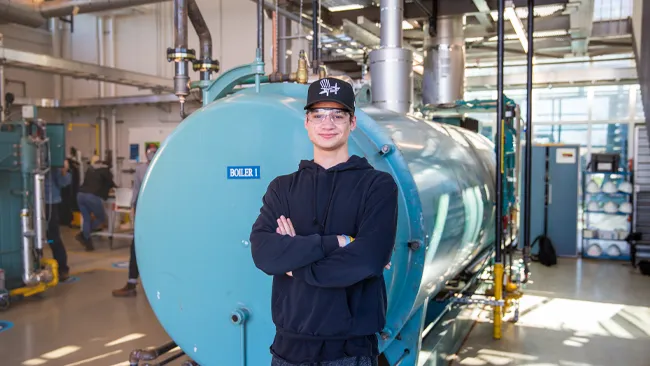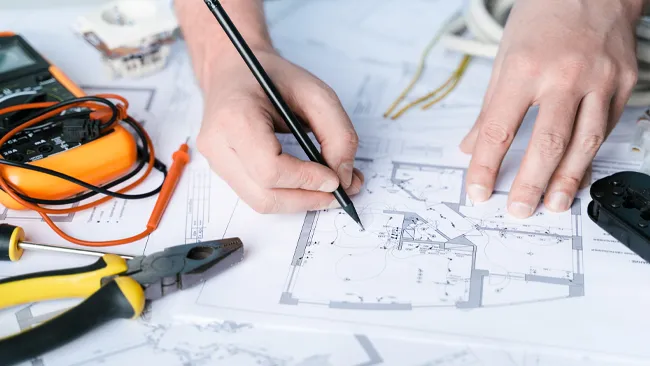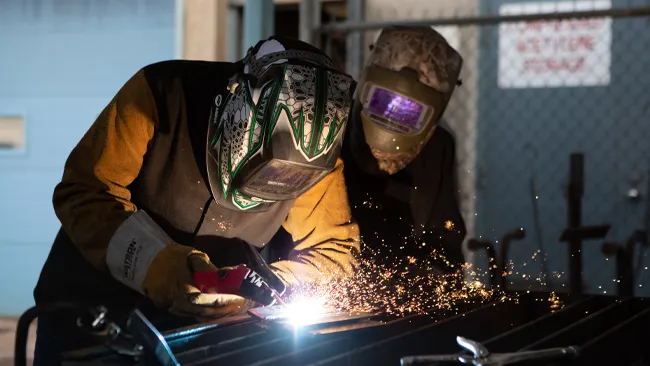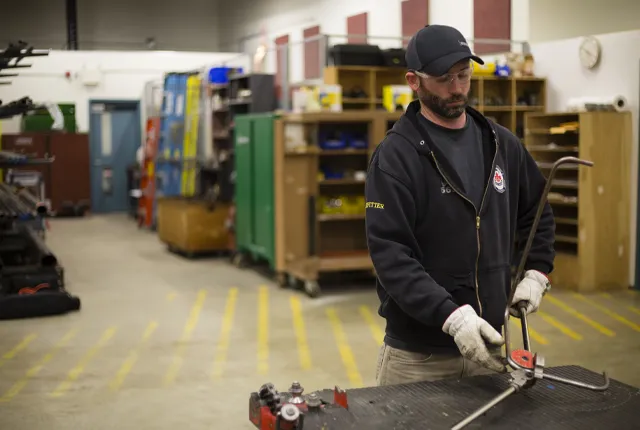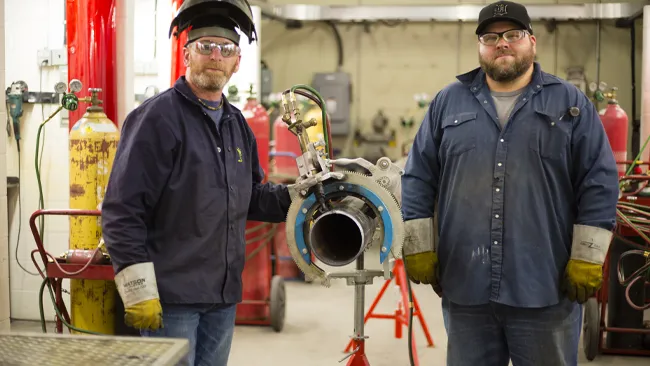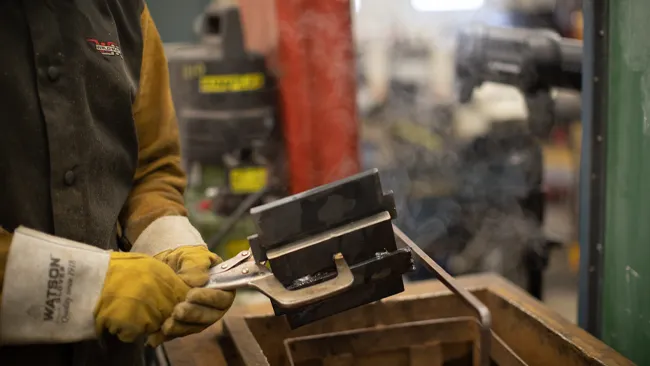A Construction Boilermaker builds, installs, erects, tests, maintains, and repairs all types of boilers, tanks and pressure vessels. They perform all types of structural and plate work on dust, air, gas, steam, oil, water, and other liquid-tight pressure vessels.
Lambton College offers the in-school portion of the curriculum as set out by Skilled Trades Ontario.

Training
The Construction Boilermaker apprenticeship program consists of on-the-job and in-school training. The program typically takes four years to complete and consists of:
- 7,280 hours of on-the-job training and work experience
- 720 hours of in-school training
Red Seal Exam
At the completion of the in-school portion of the apprenticeship, graduates are given a week of preparation before they write the Red Seal exam for the trade.
Our students may write this exam at the College at the end of the training, or book a separate time to write the exam at the MLTSD office.
What does a Boilermaker do?
Admission Requirements
- O.S.S.D. or equivalent
Application Process
This is an apprenticeship program and follows a different application process than regular post-secondary education programs. You cannot apply to this program through ontariocolleges.ca.
International Brotherhood of Boilermakers
All boilermaker apprentices in Ontario must belong to the International Brotherhood of Boilermakers, Local 128 and must register through the Ministry of Labour, Training and Skills Development (MLTSD). Apprentice contracts and training schedules are managed through the IBB Local 128.
Applicants who are registered as an apprentice in a trade should receive a letter from the Ministry of Labour, Training & Skills Development inviting them to apply for schooling. All applications from that point will need their payment processed by the Office of the Registrar & Financial Aid Services at Lambton College.
If you are a registered apprentice and have not received a letter regarding apprenticeship school, please contact your local Ministry of Labour, Training & Skills Development office.
Training Dates
The following training dates are for the 2023-2024 academic year for the Construction Boilermaker apprenticeship.
- Basic (CBMB) Dates
- January 13, 2025 - March 7, 2025
- Intermediate (CBMI) Dates
- October 21, 2024 - December 13, 2024
Course List
Plant Systems & Ancillary Components I
Upon successful completion, the apprentice is able to describe the introductory fundamentals and function of pressure vessel systems and describe the types, applications, construction, and features of pressure vessels in accordance with the government safety regulations, manufacturer's recommendations, specifications, and approved industry standards.
Trade Environment
Upon successful completion the apprentice is able to apply effective communication techniques using communication media related to apprenticeship, trade unions and production information, and explain information related to apprenticeship, trade unions and the production environment in the boilermaker trade.
Rigging & Hoisting I
Upon successful completion the apprentice is able to explain and practice general rigging including wire rope, and block and tackle, formulas for safe working loads, and slings and chokers; explain the use of ladders, scaffolding, and work platforms; explain and perform the International Standards of Hand Signals, and describe audio communication signals for hoisting operations in accordance with Construction Safety Association of Ontario (CSAO) guidelines, and in accordance with government safety regulations, and manufacturers' recommendations and specifications.
Prints & Layouts I
Upon successful completion the apprentice is able to: interpret and correlate information from prints including material, identification of parts, orientation and layout of structure or parts of a structure, using drafting techniques; describe and develop layouts for basic geometry and simple plate structure and; describe the features of basic construction materials used to fabricate pressure vessels and cut and thread pipe according to government regulations, manufacturer's recommendations and specifications and approved industry standards.
Trade Tools & Equipment
Upon successful completion the apprentice is able to: Operate and maintain basic hand tools; Perform measurements with instruments according to job requirements; Describe and use portable power tools; Describe the construction features and demonstrate the safe use of shop equipment according to government safety regulations and manufacturer's recommendations
Applied Trade Calculations I
Upon successful completion the apprentice is able to apply basic mathematics to solve trade-related problems according to the specifications for specific pressure system applications.
Welding & Cutting I
On successful completion, the apprentice is able to: Perform cutting on mild steel using fuel equipment; Perform Shielded Metal Arc Welding (SMAW) procedures on pressure vessels and related components according to the ASME - Boiler and Pressure Vessel Code requirements and in accordance with a Welding Procedure Specification (WPS); Explain physical and mechanical metallurgy, including elements of materials, production processes, properties, and types of steel according to manufacturer's recommendations and specifications and approved industry standards.
Plant Systems & Ancillary Components II
Upon successful completion the apprentice is able to: Select, use, and set up scaffolding and work platform structures; Describe trade practices and procedures for heavy industrial installations; Describe the function, construction features, types, and application and perform layout and fit up erection procedures of Tanks; Describe Quality Control Systems; Describe how to set up job sites; Describe how to maintain plant systems and remove and demolish plant components and equipment according to job requirements, manufacturer's recommendations and specifications and approved industry standards.
Rigging & Hoisting II
Upon successful completion the apprentice is able to: Describe the construction and design features of wire rope drums and spooling procedures; Describe block and tackle systems used for reeving and perform square reeving procedures; Describe the types and operation of cranes; Perform rigging, hoisting, and jacking operations using recommended equipment according to the job requirements, government safety regulations, manufacturer's recommendations, and specifications, and approved industry standards.
Prints & Layouts II
Upon successful completion the apprentice is able to: Identify information on fabrication and erection drawings; Identify and use Computer Aided Drawing programs including AutoCAD and/or Auto Sketch and/or Quick Pen; Perform layout and fabricating skills according to job requirements, government safety regulations, manufacturer's recommendations, and specifications, and approved industry standards.
Applied Trade Calculations II
Upon successful completion the apprentice is able to apply mathematics required to perform layout and fitting according to manufacturer's recommendations and specifications and approved industry standards.
Welding & Cutting II
Upon successful completion the apprentice is able to: Select materials used in the trade; Perform cutting and welding procedures using cutting and heating processes and Shielded Metal Arc Welding equipment according to ASME code government safety requirements, manufacturer's recommendations and approved industry standards; Describe concepts in metallurgy, including physical and mechanical properties and control of expansion and contraction according to sound scientific and physics principles.
Plant Systems & Ancillary Components III
Upon successful completion the apprentice is able to perform set up and installation procedures required for boiler erection according to government safety regulations, manufacturer's recommendations and specifications and approved industry standards. Upon successful completion the apprentice is able to describe construction features of pollution control equipment according to government safety and environmental regulations, manufacturer's recommendations and specifications. Upon successful completion the apprentice is able to assembly and install condensers and exchangers and related components; according to government regulations, manufacturer's recommendations and specifications and approved industry standards. Upon successful completion the apprentice is able to perform tank shell assembly procedures; according to government safety regulations, manufacturer's recommendations and specifications and approved industry standards. Upon successful completion the apprentice is able to describe fiberglass fitting procedures according to government safety regulations, manufacturer's recommendations and specifications and approved industry standards.
Rigging & Hoisting III
Upon successful completion the apprentice is able to perform reeving procedures of block and tackle equipment according to job requirements, government safety regulations, manufacturer's recommendations and specifications and approved industry standards.
Prints & Layouts III
Upon successful completion the apprentice is able to develop templates, patterns and drawings and set up power rolling equipment according to manufacturer's recommendations and specifications and approved industry standards. Upon successful completion the apprentice is able to fit plate units and pipe and shell sections with components according to job requirements, manufacturer's recommendations and approved industry standards. Upon successful completion the apprentice is able to describe procedures for destructive and non-destructive testing of materials; according to government regulations, manufacturer's recommendations and specifications and approved industry standards. Upon successful completion the apprentice is able to apply visual dimensional and drawing reference checks and quality and production flow inspection methods according to government regulations, manufacturer's recommendations and specifications and approved industry standards.
Applied Trade Calculations III
Upon successful completion the apprentice is able to apply advanced mathematics required to perform layout and fitting according to manufacturer's recommendations and specifications.
Welding & Cutting III
Upon successful completion the apprentice is able to describe the cutting process for plasma arc and high pressure water and oxygen lances, interpret welding symbols and perform Shielded Metal Arc Welding procedures according to government safety regulations, manufacturer's recommendations and approved industry standards. Upon successful completion the apprentice is able to explain concepts in metallurgy including the effect of alloys on the cutting action, heat straightening and hot and cold working according to sound scientific and principles of physics. Upon successful completion the apprentice is able to describe heat treatment including steel manufacturing methods and effects of heat treatment according to sound principles of metallurgy, manufacturer's recommendations and specifications.

This Employment Ontario program is funded in part by the Government of Canada and the Government of Ontario.
Contact Us
Applied Science, Engineering Technology & Trades

